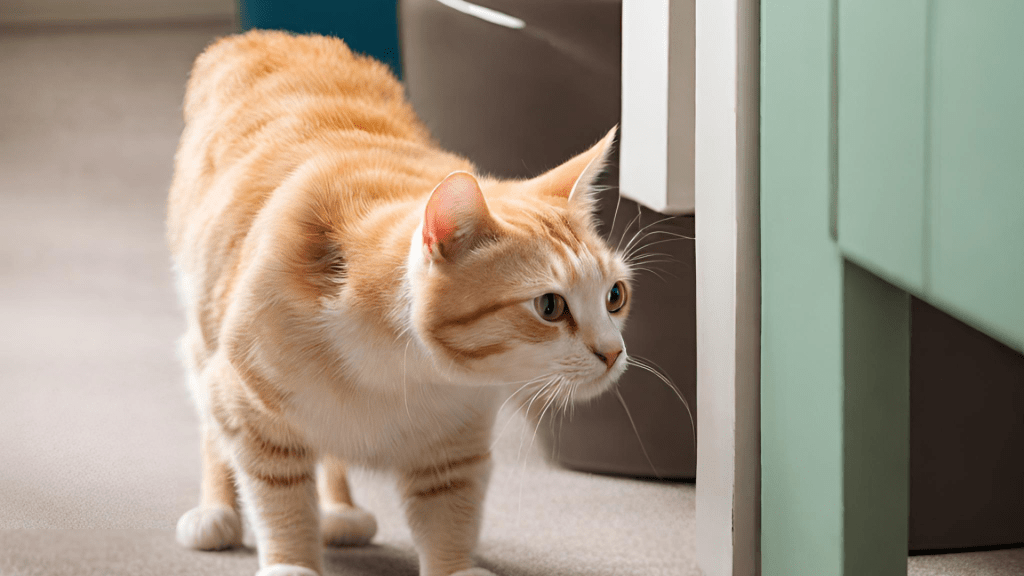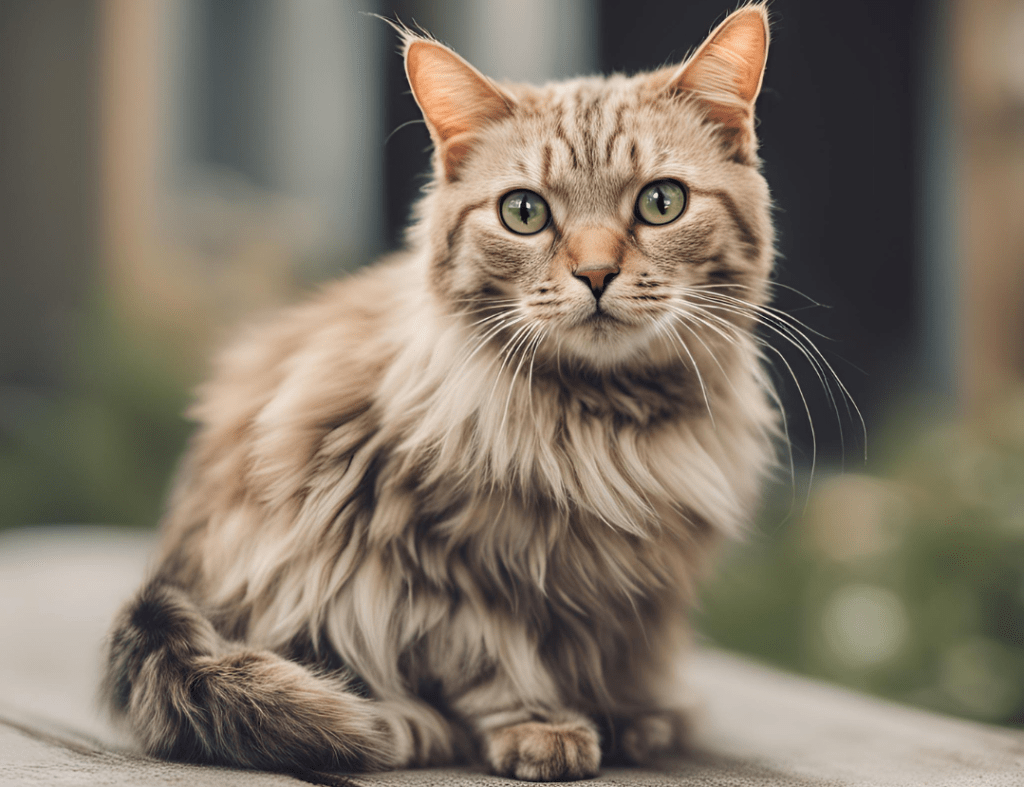Last updated on July 2, 2025

The Bengal cat’s muscular, streamlined body and strikingly untamed appearance are accentuated by its strikingly spotted or marbled coat. The Bengal is balanced and proportioned, devoid of oversized features, despite its exotic appearance. Its athletic silhouette, smallish ears, neat paws, and wedge-shaped head give it a graceful yet nimble appearance.
So, you’ve heard about the Bengal cat and are curious to learn more? You’re in the right place! These stunning felines are beautiful and full of personality and charm.
What you need to know?
- Benefits from an experienced owner
- Not ideal for family homes
- Independent but friendly
- Lean and elegant cat
- Highly active and inquisitive cat
- Requires grooming once a week
- Slightly talkative cat
- Needs extensive outdoor space
- Can be regularly left for a few hours
- Needs a calm environment
- Needs high level of enrichment including simulated hunting games and interactive play
- Bengal Cat Vet Rating
- Origins of the Bengal Cat
- Bengal Cat Physical Characteristics
- Bengal Cat Personality and Temperament
- Caring for a Bengal Cat
- Bengal Cat Training and Socialization
- Bengal Cat Living Environment
- Common Health Issues of Bengal Cat
- Adopting a Bengal Cat
- Price of a Bengal Cat
- Bengal Cats in Popular Culture
- Myths and Misconceptions
- Bengal Cat Clubs and Organizations
- Conclusion
Bengal Cat Vet Rating
| Family-friendly: | 1/5 |
| Playfulness: | 5/5 |
| Intelligence: | 5/5 |
| Tendency to Vocalise: | 2/5 |
| Likes Other Pets: | 5/5 |
| Grooming needs: | 2/5 |
| Shedding: | 2/5 |
Origins of the Bengal Cat
The Asian Leopard Cat Ancestry
The Bengal cat’s lineage can be traced back to the Asian Leopard Cat (ALC), a small wild cat in Asia. The ALC’s exotic spotted coat pattern and wild demeanor captivated breeders. This led to the creation of a domestic breed with similar looks but a much friendlier temperament.
Development of the Breed
The Bengal breed was developed in the 1970s by Jean Mill. She aimed to create a domestic cat with the exotic appearance of the ALC but with a tame nature. She crossed ALCs with domestic cats. This produced the Bengal cat we know today. The Bengal cat is renowned for its stunning coat and lively personality.
Bengal Cat Physical Characteristics
Size and Weight
Bengal cats are medium to large-sized felines. Males typically weigh between 10-15 pounds, while females are slightly smaller, weighing 8-12 pounds. Their muscular build adds to their wild appearance.
Coat and Color Patterns
One of the most striking features of Bengal cats is their coat. It’s short, dense, and incredibly soft to the touch. They come in two main patterns: spotted and marble.
Spotted
Spotted Bengals have a coat covered in distinct spots or rosettes reminiscent of a leopard or jaguar. The spots can vary in size and shape, adding to the breed’s exotic allure.
Marble
Marble Bengals have a swirled pattern on their coat, resembling marble stone. This equally stunning pattern gives the cat a unique, artistic look.
Eye Color
Bengal cats often have striking eyes, ranging from green to gold. Their piercing gaze adds to their wild and captivating appearance.
For more on this energetic and exotic breed, take time to read the full Guide about Cat Breeds.
Unique Features
Besides their coat patterns, Bengals have other distinctive features, such as a strong, muscular build and a sleek, athletic body. Their heads are relatively small compared to their bodies, with prominent cheekbones and large, expressive eyes.
Bengal Cat Personality and Temperament
Intelligence and Curiosity
Bengal cats are known for their intelligence and curiosity. They love exploring their environment and discovering new challenges, making them highly engaging pets.
Social Behavior
These cats are social butterflies. They enjoy being around people and can form strong bonds with their human companions. Bengals are also known to be vocal, often “talking” to their owners with a range of sounds.
Activity Level
Bengals are highly active and playful. They love climbing, jumping, and chasing, requiring plenty of stimulation and exercise to keep them happy.
Interaction with Other Pets
Bengals can get along well with other pets if properly socialized from a young age. However, their high energy levels might be overwhelming for more sedentary pets.
Caring for a Bengal Cat
Diet and Nutrition
Feeding your Bengal a balanced diet is crucial for their health. High-quality cat food, rich in protein, supports their active lifestyle. Please consult your vet to ensure your Bengal’s diet meets their needs.
Grooming Needs
Despite their short coats, Bengals shed and benefit from regular brushing to remove loose hair and keep their coats shiny. Bathing is rarely needed, as they are generally good at keeping themselves clean.
Exercise Requirements
Given their energy levels, the Bengals need plenty of exercise. Providing them with climbing trees, toys, and interactive play sessions will help keep them physically and mentally stimulated.
Health and Veterinary Care
A certified cardiologist carefully examines each Bengal cat in our breeding program. They use a battery of medical tests to screen for possible genetic disorders, including heart disease (HCM). By taking these preventative measures, we can ensure the wellbeing of our cats. We ensure the wellbeing of the Bengal kittens up for adoption. We focus on their future homes by averting several problems.
Our cattery is proud to have tested negative for the following diseases and parasites:
- HCM (heart condition)
- FiV / FeLV (Immunodeficiency / Leukemia)
- PK-Deficiency (anemia)
- PRA-b (progressive retinal atrophy of the eyes)
- Trichomonas (intestinal parasites)
- Giardia (intestinal parasites)
- Coccidiosis (intestinal parasites)
Regular veterinary check-ups are essential to monitor your Bengal’s health. Keeping up with vaccinations, parasite prevention, and dental care will help ensure a long, healthy life.
Bengal Cat Training and Socialization
Basic Training Tips
Bengals are highly trainable due to their intelligence. They can learn basic commands and even tricks. Positive reinforcement methods, like treats and praise, work best.
Socializing with Humans
Early socialization is critical to raising a well-adjusted Bengal. Expose them to different people, environments, and experiences to help them become confident and friendly adults.
Enrichment Activities
To keep your Bengal engaged, provide a variety of enrichment activities. Puzzle toys, interactive games, and even agility courses can help satisfy their curious minds.
Bengal Cat Living Environment
Ideal Home Setting
Bengals thrive in homes with plenty of space to explore and play. They enjoy having high places to climb and cozy spots to rest.
Indoor vs. Outdoor Considerations
While some owners allow their Bengals outdoor access, keeping them indoors or providing a secure outdoor enclosure is generally safer. It protects them from potential dangers like traffic, predators, and diseases.
Safety Precautions
Ensure your home is safe for a Bengal’s adventurous nature. Secure any hazardous items and provide plenty of safe, stimulating activities to keep them occupied.
Common Health Issues of Bengal Cat
Genetic Conditions
Like all breeds, Bengals can be prone to certain genetic conditions. These may include hypertrophic cardiomyopathy (a heart condition) and progressive retinal atrophy (an eye condition). Regular vet check-ups can help catch and manage these issues early.
Regular Health Check-ups
Routine veterinary care is essential. Regular check-ups can help detect and prevent health issues before they become serious, ensuring your Bengal stays healthy and happy.
Adopting a Bengal Cat
Choosing a Reputable Breeder
If you buy a Bengal, choose a reputable breeder. Ensure they test their cats for common genetic conditions. Also, make sure they raise their kittens in a healthy, stimulating environment.
Adoption from Shelters
Alternatively, consider adopting a Bengal from a shelter or rescue organization. Many Bengals need loving homes and can make excellent pets.
Preparing Your Home
Before bringing a Bengal home, prepare your space. Make sure you have all the necessary supplies. These include food, a litter box, and toys. Create a safe and welcoming environment for your new feline friend.
Price of a Bengal Cat
Initial Purchase Price
Depending on the breeder and the cat’s lineage, Bengals can be expensive, ranging from $1,000 to $4,000.
Ongoing Expenses
In addition to the initial purchase price, be prepared for ongoing expenses such as food, veterinary care, grooming supplies, and toys. Bengals are active cats that benefit from high-quality food and enrichment activities.
Bengal Cats in Popular Culture
Famous Bengal Cats
Some Bengal cats have gained fame on social media and in popular culture. These felines often attract attention for their striking looks and playful antics.
Representation in Media
Bengals have also appeared in various media, showcasing their beauty and unique personalities. These cats never fail to impress, whether in movies, commercials, or online videos.
Myths and Misconceptions
Common Myths
There are several myths about Bengal cats, such as the belief that they are wild and difficult to manage. While they have a wild appearance, Bengals are domestic cats with affectionate and playful temperaments.
Truths about Bengal Cats
The reality is that Bengal cats are brilliant, social, and energetic. They require much attention and stimulation but can be incredibly rewarding pets for the right owners.
Bengal Cat Clubs and Organizations
Major Organizations
Several organizations, such as the International Cat Association (TICA) and the Bengal Cat Club, are dedicated to Bengal cats. These groups provide resources, support, and community for Bengal cat owners and enthusiasts.
Benefits of Joining
Joining a Bengal cat club or organization can offer numerous benefits. You gain access to breeding information and health resources. Additionally, you can attend social events where you meet other Bengal cat lovers.
For a large, friendly cat that’s more laid-back, check out the Maine Coon Cat’s detailed information.
Conclusion
Bengal cats are a genuinely unique and captivating breed. With their exotic looks, playful personalities, and intelligent minds, they make excellent pets for those who can meet their needs. Whether you’re considering adding a Bengal to your family, it’s essential to understand their characteristics. Or perhaps you simply want to learn more about these fascinating felines. Knowing their care requirements and history can help you appreciate them even more.
FAQs about Bengal Cat
Are Bengal cats good pets for families?
Yes, Bengal cats can make great pets for families. They are especially good for families with older children. Older children can handle their high energy levels and playful nature.
Do Bengal cats get along with other pets?
Bengals can get along with other pets if properly socialized from a young age. Their playful nature might be too much for some more sedentary animals.
How much attention do Bengal cats need?
Bengal cats need a lot of attention and stimulation. They are highly active and intelligent, needing plenty of playtime and interaction to stay happy.
What should I feed my Bengal cat?
A high-quality, protein-rich diet is best for Bengal cats. Please consult your vet to ensure your cat’s diet meets their nutritional needs.
How long do Bengal cats live?
Bengal cats typically live between 12 to 16 years. Some can live longer with proper care and regular veterinary check-ups.

Claudia Guthrie is a writer and animal enthusiast with experience working for a leading equine veterinary hospital and learning more about canine development and obedience. She has personal experience with dogs, cats, rabbits, gerbils, and horses, and a lifelong interest in researching and writing about the latest in animal care, training, and breed profiles.





